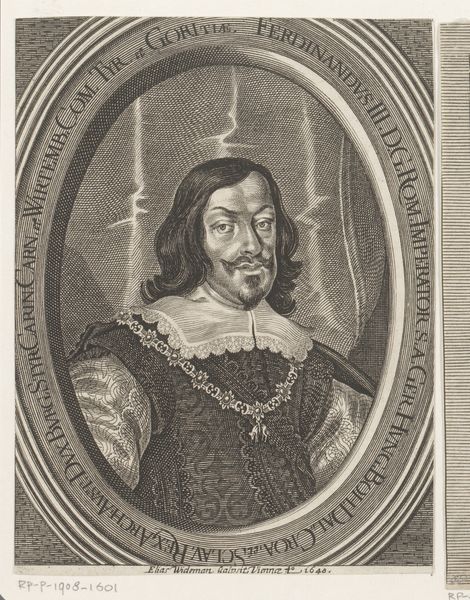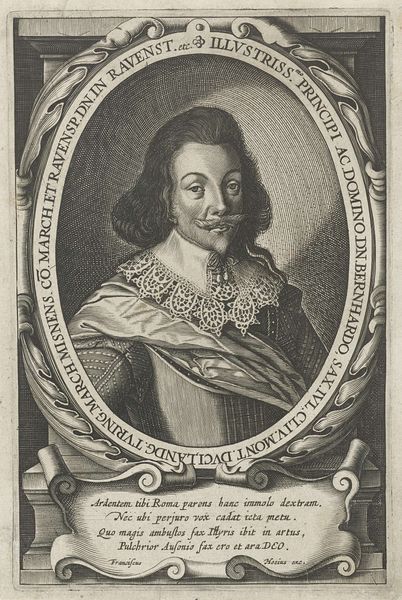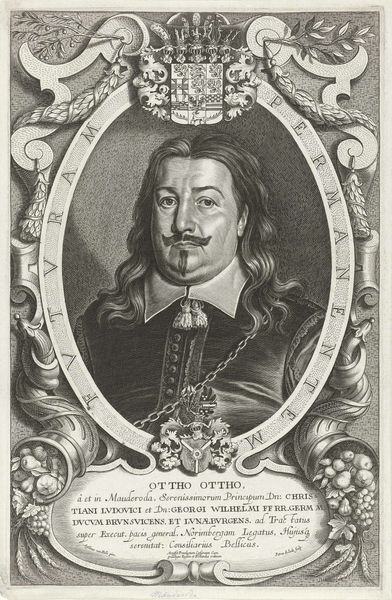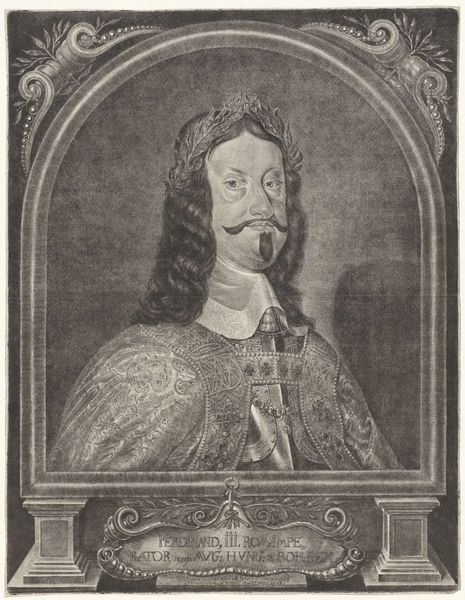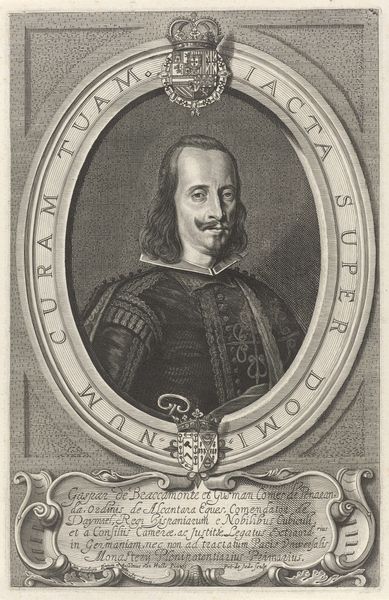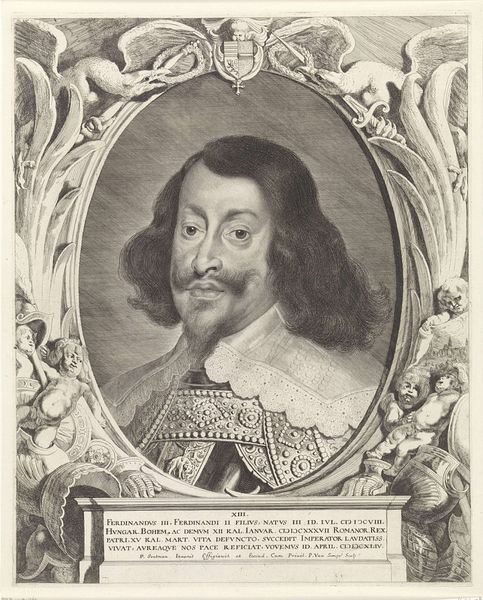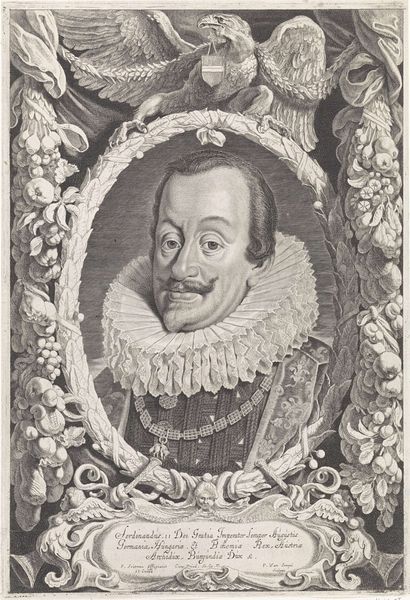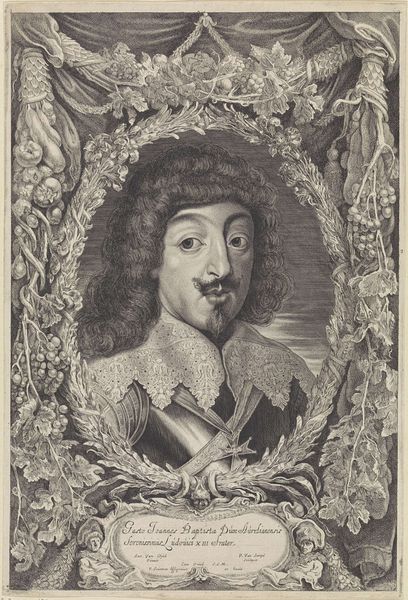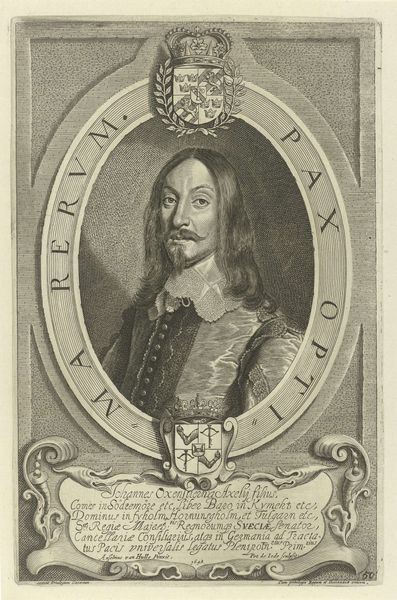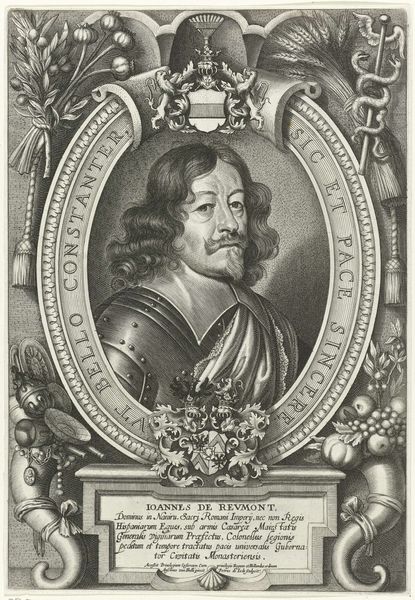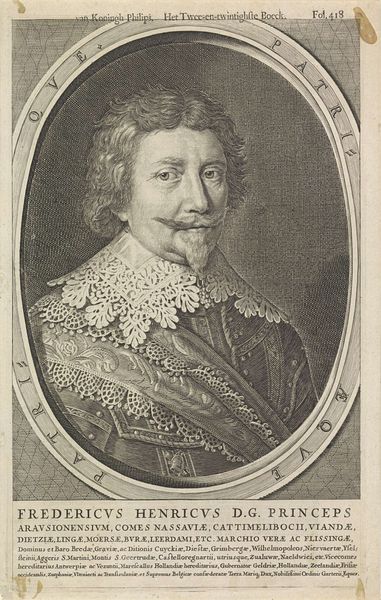
print, engraving
#
portrait
#
baroque
# print
#
old engraving style
#
limited contrast and shading
#
portrait drawing
#
history-painting
#
engraving
Dimensions: height 410 mm, width 275 mm
Copyright: Rijks Museum: Open Domain
Curator: Here we have Jonas Suyderhoef’s “Portrait of Ferdinand III, German Emperor,” created sometime between 1644 and 1650. The artist used engraving to bring this historical figure to life. What strikes you first about it? Editor: Well, it’s intensely decorative. Look at the frame, like a theatrical stage setting! But it’s all rendered in the same monotone; there's limited contrast and shading here which somehow softens the grandeur. The process looks incredibly time-consuming; it speaks volumes about the labour invested. Curator: Absolutely! There's almost a devotional quality to the rendering of lace. You feel the weight of his position, all those layers of adornment hinting at power. Though, paradoxically, the rather sweet face suggests something more vulnerable, no? Like a gilded cage. Editor: Gilded is right. The material display is phenomenal. The symbolic trappings, too: those vaguely menacing eagles at the top, balanced with the garland of fruit at the sides. All this detail must be sending a powerful message of wealth and legitimacy to his subjects. Do you think that's also true of the print medium? Did people collect these as keepsakes? Curator: That's insightful. Printing allowed for wider distribution, wasn't only available to a privileged few. It made the image of power far more pervasive. Each print required the skills of the artist, the engraver, the printer, and was individually produced and sold...so labour is built into the work's very dissemination. Editor: Indeed. Consider the accessibility of the image alongside the material and labour involved to manufacture each copy, and how they each inform one another. Curator: I suppose, looking at this, I see not just a ruler, but also the dance between aspiration and human frailty, played out on a stage of earthly and spiritual ambition. A ruler is just another person bound by the materiality and mechanisms that create both authority and propaganda, I suppose!
Comments
No comments
Be the first to comment and join the conversation on the ultimate creative platform.

